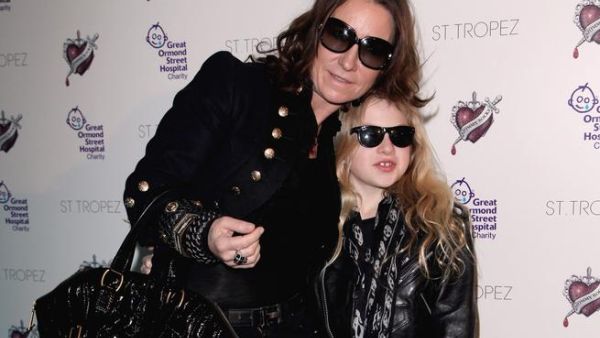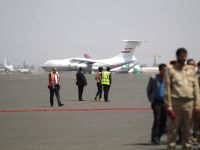BEIRUT: “Oh Mother, I lie to you,” Souad Massi sings in her tune “Yemma.” “I have to lie to you for the wind does not measure me.”
The Algerian-born singer-songwriter’s verse dwells upon the many layers of fiction that mother and daughter must navigate if they want to discover the truths about one another’s lives. Massi isn’t the first artist to mine the patchwork dialogue of disjointed truths that characterize the relationship between parents and offspring.
“When I ask her about how she’s doing,” writes artist and animated filmmaker Lena Merhej in her latest graphic novel, “Murabba wa Laban” (literally “Jam and Yogurt”), “she narrates an obscure story that has no beginning and no end.”
So commences Merhej’s frenzied reconstruction of her mother’s life.
Whizzing back and forth between her childhood in World War II-era Germany and parenthood in a seaside Beirut home – where the protagonist tries clumsily to keep a grown-up, dispersed family together – Merhej’s story acquires a stream of consciousness quality.
It seems to reflect the fogged-up lenses through which the child first learns to see her mother, rough contours the artist tries to flesh out by various means – through the stories of her mother’s life that she happens upon, the relationships that the mother maintains, and the array of behavior that protagonist exhibits. “Murabba wa Laban” attempts to piece those shards together.
“I never understood what he meant by an Eastern woman,” Merhej writes about her father, who is shown pondering the differences between his liberal, European-born wife and her traditional, domesticated Beirut neighbors.
Merhej unearths the shocks that her mother’s foreignness dealt to her own awareness as a young girl, how her mother’s German-ness clashed and blended with the Beirut environment, and how her gender also conditioned her foreignness.
The most emblematic of her artifacts is the eponymous dinner table staple. Here “Murabba wa Laban” is not literally “Jam and Yogurt” but a savory dish comprised of specially prepared ground lamb, onions and yogurt served with rice.
Merhej is known internationally and locally for her work in short films, children’s books and comic books. In 2003, her hand-drawn film “Drawing the War” won the Jury prize at the 36th New York Exposition Festival.
Her first comic book “I Think We will be Calmer in the Next War” was the highest-selling book in Lebanon in 2007 and Merhej co-founded Samandal, a tri-lingual comic book series, to which “Murabba wa Laban” is the latest addition.
“Murabba wa Laban” is not simply the story of the artist’s mother. It is, more self-consciously, the story of the artist trying to tell her mother’s story.
The narrative is constantly being disrupted by war stories and anecdotes about cultural binaries and gender problems as the mother is shown in a series of encounters, desperately trying to straddle her hybrid identities. One of the great strengths of the writing is that the reader feels the desire to learn more about the woman’s trials and tribulations.
But Merhej seems determined to keep her mother beneath a cloak of anonymity, from which she never emerges. She is never named and, almost as soon as they are introduced, her anecdotes are interrupted by unrelated asides and narrative tangents. This storytelling technique often makes Merhej’s narrative seem contrived and frustrating to read.
The story lacks the thinnest underlying thread that could tie the story’s various elements together – something even the most post-modern of narratives needs. There’s little or no consistency in the mother’s behavior and very little depth, in either the text or the drawings.
Throughout the book, the artist’s minimalist depictions of her mother are indistinguishable from those of the other female figures. Merhej seems to justify this by explaining that the woman often had to go through cosmetic changes so that she could blend in with her new surroundings.
The mother’s relationships with other characters is often discussed, but each of these relationships is represented in only a few lines and a couple of panels, which does more to compound the confusion of the story than to contribute to the protagonist’s development. These characters often meld into the mother’s own story and appearance, causing the reader to wonder whether the story is about one mother, or 12.
The sketching style Merhej employs does not help to convey much in the way of nuance, with the characters’ expressions seeming to display either excitement (their eyes bulging well beyond their sockets), or stoicism (represented by half-moon eyes).
Merhej’s meta-narrative technique attempts to add more weight to the story, introducing finer lines to an intricate mother-daughter relationship. The reader should appreciate the author’s desire to set the bar so high. But when you set the bar high, you sometimes fall short.
“Murabba wa Laban or how my mother became Lebanese” (2010) is published, in Arabic, by Samandal and can be found in select Beirut-area bookshops.
By Tamara Qiblawi








